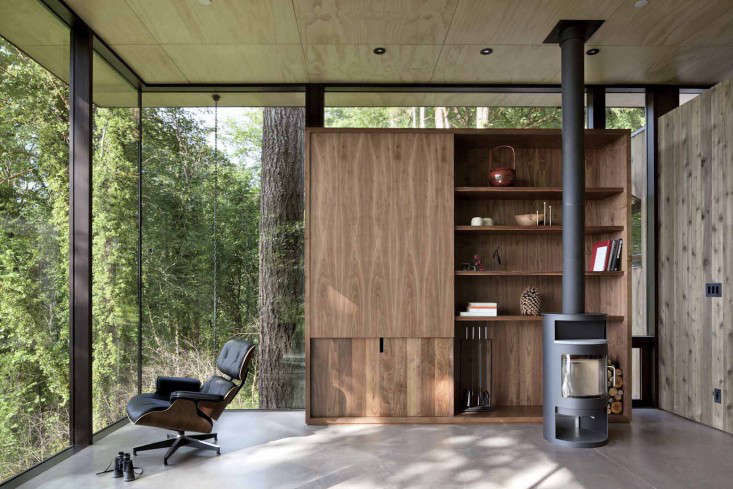
Can anyone resist the sensation of walking barefoot on a heated floor? Here’s the lowdown on the subject: Read on if you’re ready to rip up your floors in the name of cost-effective, energy-efficient heat.
In a rustic architect-designed cabin on the southern tip of Puget Sound, the heat comes up through the concrete floors.
1. What is radiant floor heating?
Invented by the engineering-savvy ancient Romans, who had slaves fanning wood-burning fires under elevated marble floors, radiant floor heating is an under-the-floor heating system that conducts heat through the floor surface rather than through the air (as in conventional forced-air heating systems).
Imagine waking up and putting your bare feet on warm oak floorboards every morning in the winter.
The two most common types of radiant-floor heating systems are electric (heat via electric wires) and hydronic (heat via hot water tubes), both of which are buried underneath the floor.
2. How does radiant floor heating work?
For more on the pros and cons of each system and which might be better suited to you, see Radiant Floor Heating: Electric vs. Hydronic by San Francisco contractor Jeff King of Jeff King & Co., a member of the Remodelista Architect & Designer Directory.
An electric radiant heating wire system installation from contractor Jeff King & Co.
Not only does radiant floor heating keep your toes warm, but it ensures that the rest of your body will be kept at a comfortable temperature as well.
3. What are the pros of radiant floor heating?
In a conventional forced-air heating system, heated air (along with dust and allergens) rises to the ceiling and drops back down as its temperature lowers, making it difficult to keep your toes warm, even if everything above your shoulders is boiling.
The diagram on the left illustrates the principle of radiant floor heating in which heated surfaces transmit heat to all surrounding objects. The diagram on the right illustrates how heated air in a conventional forced-air system rises to the ceiling and then comes back down as cool air.
A remodel in Brooklyn, kitted out with radiant heating beneath new painted-oak floors.
4. What are the cons of radiant floor heating?
A radiant-floor heating system is difficult to install after a floor is already in place, and it’s really only feasible if you’re prepared to remove your floors or are building a new house.
While there are new products, such as electric radiant pads, that can be installed between the joists underneath your floor, they require access from below via a basement or crawl space.
Photograph by Matthew Williams for Remodelista from 14 Lessons in Minimalism from the Glass House.
Stone tiles work well with radiant floor heating because of the material’s thermal conducting properties.
The Glass House’s floor is more indestructible than wood and it conducts heat well–the house has a hydronic radiant-heat system in which hot water flows through piping under the bricks.
Photograph by Matthew Williams for Remodelista from 14 Lessons in Minimalism from the Glass House.
While all flooring materials can be used with heated floors, some work more effectively than others. Vinyl and plastic laminate floors also come with temperature limitations, while carpets have insulating properties that potentially reduce heat flow.
5. Which flooring materials work best with radiant heat?
The rooms at the Wythe Hotel in Brooklyn, New York, feature polished concrete floors with radiant floor heating.